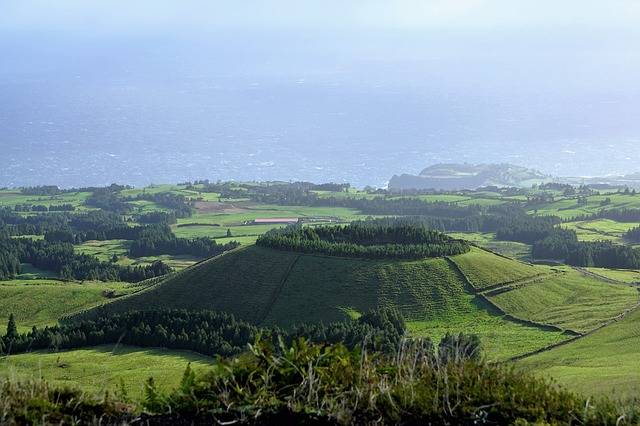
The Azores are a Portuguese archipelago located in the middle of the Atlantic Ocean, about 1,500 km west of Lisbon and about 3,900 km east of New York City. The nine islands that make up the archipelago are Santa Maria, São Miguel, Terceira, Pico, Faial, São Jorge, Graciosa, Flores, and Corvo.
The Azores were first discovered by Portuguese sailors in the early 15th century. At the time, the islands were uninhabited and covered in dense forests. The first settlers arrived on Santa Maria in 1427.
The islands were originally settled for their strategic location and their abundance of natural resources. Over the centuries, the Azores have become an important stopover point for transatlantic travelers. Today, the archipelago is a popular tourist destination, known for its stunning landscapes and its rich culture.
The largest and most populous island in the archipelago is São Miguel. The capital of the Azores is also located on São Miguel, in the city of Ponta Delgada. Other major cities on the island include Ribeira Grande and Vila Franca do Campo.
São Miguel is home to a number of interesting attractions, including the Sete Cidades National Park, the Furnas Valley, and the Lagoa do Fogo. The island is also known for its thermal springs and its volcanic lakes.
Santa Maria is the second-largest island in the archipelago. It is home to the city of Vila do Porto, which is the largest city on the island. Other notable attractions on Santa Maria include the Santa Maria Airport (which is the oldest airport in the world) and the Fort of São Brás.
The island of Terceira is home to Angra do Heroísmo, which is listed as a UNESCO World Heritage Site. Angra do Heroísmo is one of the most beautiful and well-preserved colonial towns in Portugal. Other attractions on Terceira include the Monte Brasil National Park and the Lajes Air Base.
Pico is the tallest mountain in Portugal and the second-tallest mountain in the Azores. The island is also home to a number of interesting attractions, including the Pico Mountain Vineyard and the Lajes do Pico Airport.
Faial is known for its beautiful landscapes and its active volcanoes. The island is home to the city of Horta, which is a popular tourist destination. Other attractions on Faial include the Capelinhos Volcano and the Caldeira do Faial Natural Park.
São Jorge is a rural island with a beautiful landscape of rolling hills and terraced vineyards. The island is home to the city of Velas, which is a popular tourist destination. Other attractions on São Jorge include the Gruta das Torres Cave and the Serra da Estrela Natural Park.
Graciosa is a small and peaceful island with a beautiful landscape of rolling hills and white-sand beaches. The island is home to the city of Santa Cruz da Graciosa, which is a popular tourist destination. Other attractions on Graciosa include the Furnas do Enxofre Volcanic Area and the Calheta de Nesquim Beach.
Flores is known for its beautiful landscapes and its rich culture. The island is home to the city of Santa Cruz das Flores, which is a popular tourist destination. Other attractions on Flores include the Lagoa das Flores Lagoon and the Cabeço Gordo Mountain.
Corvo is the smallest and most remote island in the archipelago. The island is home to the city of Vila do Corvo, which is a popular tourist destination. Other attractions on Corvo include the Caldeira Central Volcano and the Rocha dos Bordões Lighthouse.






